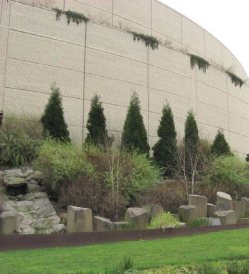
by Brianna Crandall — May 2, 2011—The U.S. Environmental Protection Agency (EPA) is launching a new strategy to promote the use of green infrastructure by cities and towns to decrease pollution to local waterways by treating rain where it falls and keeping polluted stormwater from entering sewer systems. EPA notes that stormwater is one of the most widespread challenges to water quality in the nation.
Effective green infrastructure tools and techniques include green roofs, permeable materials, alternative designs for streets and buildings, trees, rain gardens and rain harvesting systems. EPA notes that energy savings is one of the greatest benefits of green infrastructure, along with other economic benefits. On and around buildings, green infrastructure can reduce heating and cooling costs. For example, green roofs reportedly reduce a building’s energy costs by 10 to 15 percent.
EPA will work with partners including local governments, watershed groups, tribes and others in 10 cities that have utilized green infrastructure and have plans for additional projects. EPA will encourage and support expanded use of green infrastructure in these cities and highlight them as models for other municipalities around the country. The 10 cities are: Austin, TX; Boston, MA; Cleveland, OH; Denver, CO; Jacksonville, FL; Kansas City, MO; Los Angeles, CA; Puyallup, WA; Syracuse, NY; and Washington, DC and neighboring Anacostia Watershed communities.




